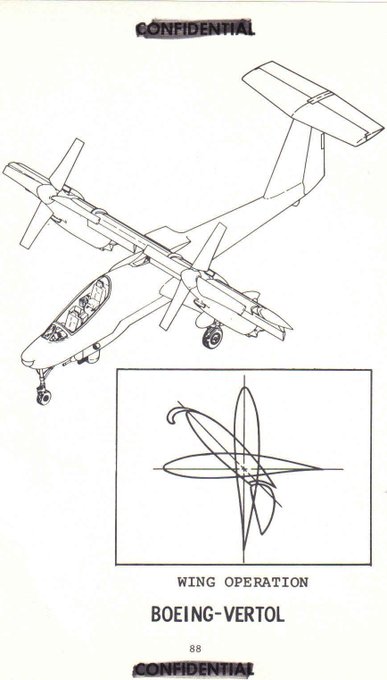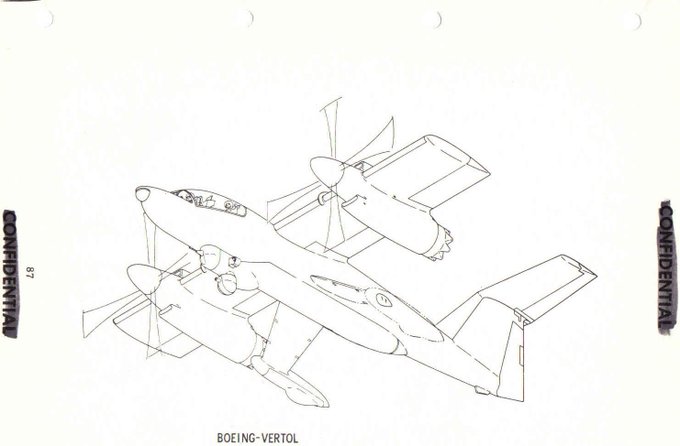the M-3000, a North American Aviation study for converting the XB-70 to a supersonic civilian liner. the M-3000 likely would have suffered from high costs and low capacity alongside the waning interest in SSTs by the late 20th Century. no full-scale mockups were constructed.
a Lockheed brochure on the F-22 in the Advanced Tactical Fighter program. 1/6
a mid-1980s project, the McDonnell Douglas Model 279 was to be a successor to the AV-8A. though similar in nozzle configuration and mass to the Harrier, the Model 279 incorporated large lifting canards and was intended to be supersonic with several inlet designs studied.
Canard Rotor Wing was a Boeing-DARPA effort to design a vertical takeoff system with enhanced cruise range. jet exhaust would both drive the rotor's tip jets for vertical takeoff and provide thrust for level flight with the rotor halting to function as a wing.
though defined by its helicopter competitors such as the AH-56 and S-66, the 1960s' AAFSS program did permit convertiplanes and tiltwings. the Boeing Vertol Model 147 made use of such a configuration, deriving the lift system from the VZ-2.
Rockwell International next-generation bomber studies from the 1970s. at the time, the advantages of stealth were not realized in full and attention was given to concepts such as active protection and hydrogen fuel alongside the more conservative supersonic penetration option.
photographs of Sukhoi's T8, the prototype designation for the Su-25. as part of the LSSh program, several of these test models would be built in the 1970s. the first photo is of an earlier mockup possessing a distinctive nose and intake shape.
Virtus was a mid 1970s NASA proposal for a Space Shuttle Orbiter transport vehicle. incorporating two B-52 fuselages into its design, it would have been able to perform transport flights for both the Orbiter and outsize rocket components.






































